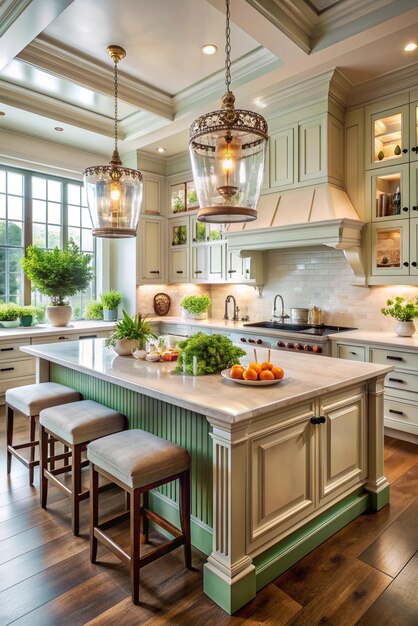Creating a Stunning Kitchen Interior Design: Key Elements and Trends
Share this:

Embark on a journey through the world of kitchen interior design, where every corner and detail play a crucial role in shaping not just the aesthetics but also the functionality of a space. From innovative layouts to captivating color schemes, explore how these elements come together to create a harmonious and inspiring kitchen environment.
Delve deeper into the essential components that make up a well-designed kitchen, understanding how each element contributes to the overall ambiance and practicality of the space.
Importance of Kitchen Interior Design
Having a well-designed kitchen interior can significantly impact our daily lives. It not only enhances the aesthetic appeal of the space but also plays a crucial role in functionality and efficiency.Influence on Mood and Productivity
The design of a kitchen can greatly influence our mood and productivity. A clutter-free and organized kitchen can create a sense of calm and make cooking a more enjoyable experience. On the other hand, a poorly designed kitchen with inadequate storage and inefficient layout can lead to frustration and hinder productivity.Popular Kitchen Interior Design Styles
- Modern: Characterized by sleek lines, minimalistic design, and high-tech appliances.
- Traditional: Embracing classic elements like ornate cabinetry, warm colors, and vintage fixtures.
- Transitional: Combining elements of both modern and traditional styles for a balanced look.
- Scandinavian: Known for its simplicity, clean lines, and light color palette to create a bright and airy space.
- Farmhouse: Featuring rustic elements, exposed beams, farmhouse sinks, and cozy aesthetics.
Elements of Kitchen Interior Design
When it comes to designing a kitchen, various elements play a crucial role in creating a functional and aesthetically pleasing space. The layout, lighting, color scheme, storage, appliances, countertops, and backsplashes are all essential components that contribute to the overall design of a kitchen.Layout
The layout of a kitchen is fundamental as it determines the efficiency of the space. It involves the arrangement of key elements such as the sink, stove, refrigerator, and cabinets in a way that maximizes functionality and workflow.Lighting
Proper lighting is essential in a kitchen to ensure visibility and create the right ambiance. Incorporating a mix of task lighting, ambient lighting, and accent lighting can enhance the overall design and functionality of the space.Color Scheme
The color scheme of a kitchen sets the tone for the space. Whether you opt for a bold and vibrant palette or a more neutral and calming one, the colors you choose can significantly impact the overall look and feel of the kitchen.Storage
Effective storage solutions are crucial in a kitchen to keep the space organized and clutter-free. Utilizing cabinets, drawers, pantry systems, and clever storage accessories can optimize space and improve functionality.Appliances
Appliances not only serve a functional purpose but also contribute to the design aesthetic of a kitchen. Choosing appliances that complement the overall style and color scheme can enhance the visual appeal of the space.Countertops and Backsplashes
Countertops and backsplashes are not only practical elements in a kitchen but also serve as design focal points. Selecting durable and visually appealing materials for countertops and backsplashes can elevate the overall look of the kitchen.Designing Functional Kitchen Spaces
Creating a functional kitchen space is essential for efficiency and convenience in daily activities. Optimizing space, establishing a practical workflow, and maximizing storage are key factors to consider when designing a kitchen.Tips for Optimizing Space in Small Kitchens
- Utilize vertical space by installing shelves or cabinets that reach the ceiling.
- Choose multipurpose furniture or appliances to save space.
- Use light colors and adequate lighting to create a sense of openness.
- Consider compact storage solutions such as pull-out drawers or rotating carousels.
The Importance of a Functional Workflow in Kitchen Layout
Establishing a practical workflow in the kitchen layout can enhance efficiency and productivity. A well-designed workflow ensures that the cooking, cleaning, and storage areas are easily accessible and logically arranged. This can be achieved by following the traditional kitchen work triangle concept, where the stove, sink, and refrigerator are positioned in a triangular layout for optimal functionality.Strategies for Maximizing Storage in a Kitchen Design
- Utilize every inch of available space, including corners and under-sink areas.
- Invest in customizable storage solutions such as pull-out pantry shelves or drawer dividers.
- Consider incorporating overhead pot racks or hanging baskets to free up cabinet space.
- Use storage containers or organizers to keep items neatly arranged and easily accessible.

